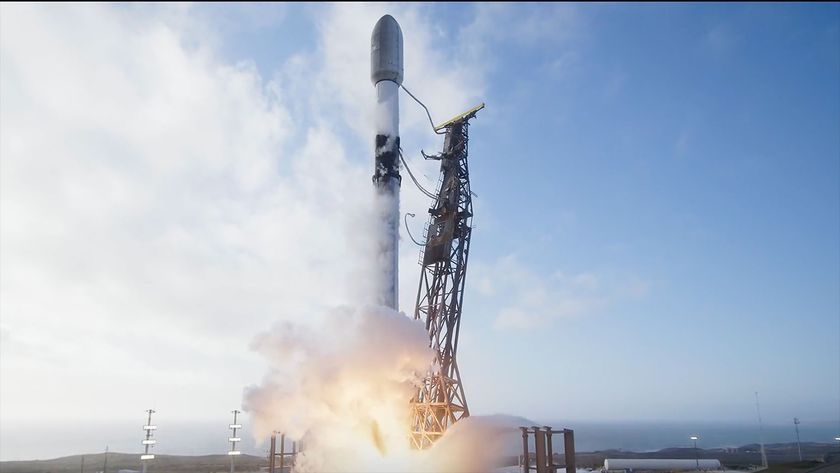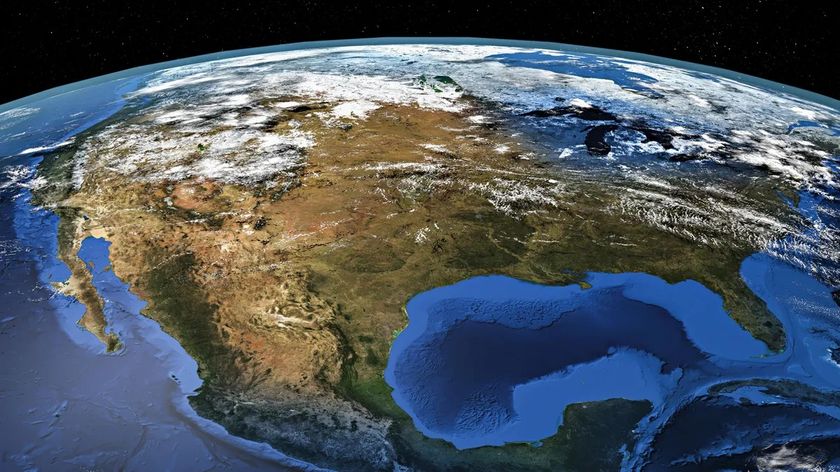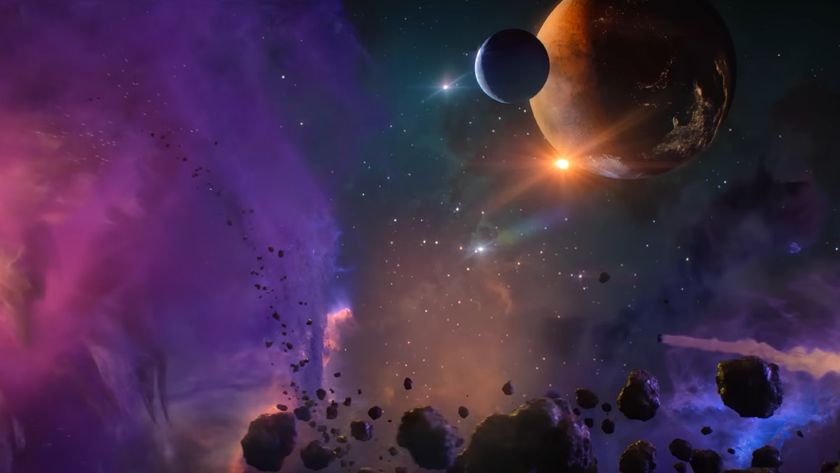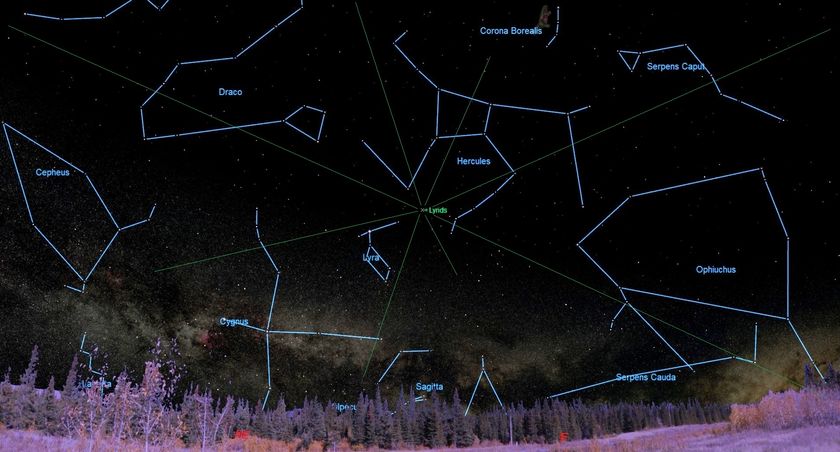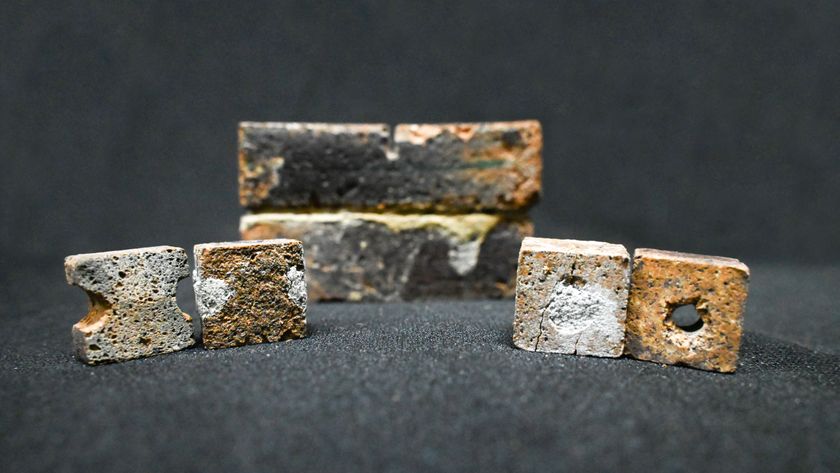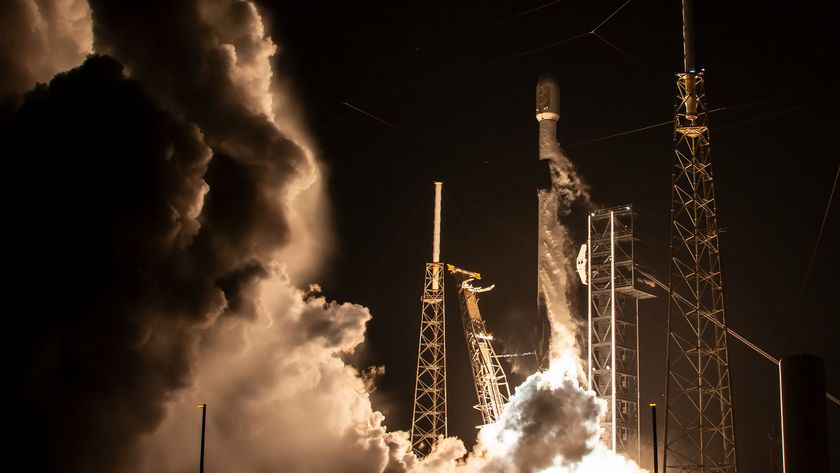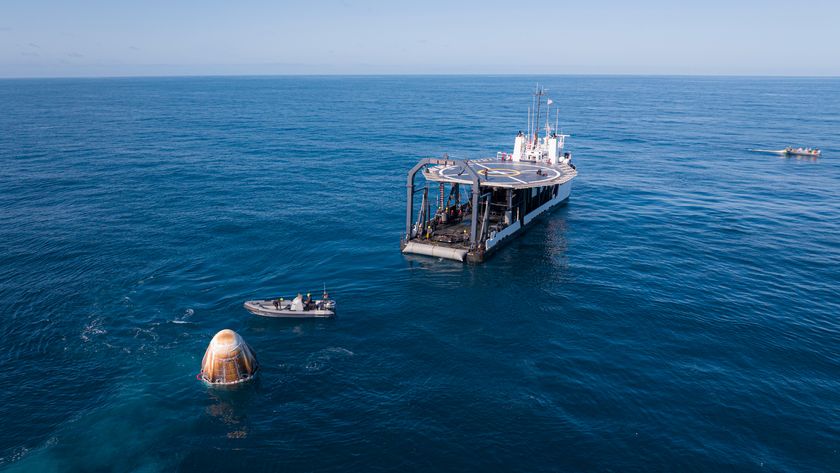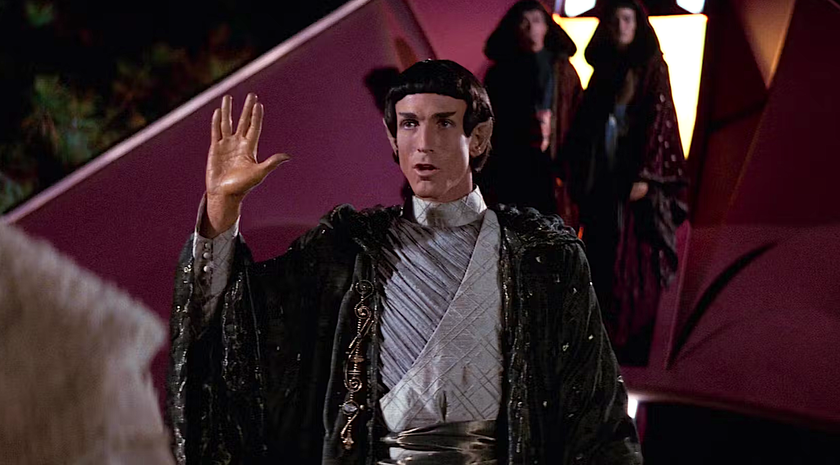Soyuz Spacecraft Lands Safely with Russian, French Space Station Crew
A Russian cosmonaut and an astronaut from France returned from the International Space Station on Friday (June 2), landing with one fewer crewmate than when they left Earth six months ago.
Oleg Novitskiy of Russia's space agency Roscosmos and Thomas Pesquet with the European Space Agency (ESA) touched down on the steppe of Kazakhstan on board the Russian Soyuz MS-03 spacecraft at 10:10 a.m. EDT (1410 GMT or 8:10 p.m. local Kazakh time).
Their parachute-assisted landing wrapped up 196 days in space since their launch on Nov. 17, 2016 — along with NASA astronaut Peggy Whitson. [Launch Photos: Expedition 50 Blasts Off to the International Space Station]
"We're a little bit sad to leave her behind," said Pesquet on Thursday (June 1), a day before he left the space station.
Whitson had originally been slated to land with her launch crewmates, Novitskiy and Pesquet. An available seat on a subsequent Soyuz launched in April allowed her mission to be extended. She will now return to Earth with cosmonaut Fyodor Yurchikhin and astronaut Jack Fischer when they land in September.
A record-setting astronaut, including being the only woman to command the space station twice, Whitson has already spent more time in space over the course of her three trips to orbit than any other American or woman worldwide.
"I just want to say for Oleg and me, we are really proud of being part of such a team and flying with Peggy. Peggy is a legend, but she is also absolutely unbelievable to work with or just hang around with and live with in space," said Pesquet.
Get the Space.com Newsletter
Breaking space news, the latest updates on rocket launches, skywatching events and more!
"We are, of course, going to miss Oleg and Thomas," said Whitson. "They're exceptional astronauts in every sense of the word. But mostly, we are going to miss their sense of humor and camaraderie."
Novitskiy and Pesquet served on the space station's 50th and 51st expedition crews. Their undocking aboard Soyuz MS-03 from the orbiting complex's Rassvet module at 6:47 a.m. EDT (1047 GMT) marked the beginning of Expedition 52 with Yurchikhin in command.
Three more crewmates, Sergei Ryazansky of Roscosmos, Randy Bresnik of NASA and Paolo Nespoli of ESA, are set to launch on Soyuz MS-05 on July 28.
During Novitskiy and Pesquet's time in space, they helped to conduct a multitude of science experiments, including a payload of European investigations flown to the station as part of Pesquet's "Proxima" mission. The two also saw the departure of the Russian Progress MS-03 cargo craft and arrival of Progress MS-05, and they helped receive and unpack the S.S. John Glenn, a U.S. commercial freighter launched by Orbital ATK for NASA.
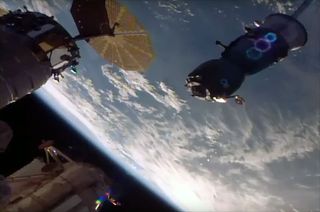
Pesquet also went out on two spacewalks with Expedition 50 commander Shane Kimbrough to connect a new set of batteries on the exterior of the station and to prepare one of the outpost's ports for the future installation of a docking adapter to support U.S. commercial crew spacecraft.
In total, Pesquet logged 12 hours and 32 minutes on the extravehicular activities (EVA), the first two of his career.
"It's been a fantastic adventure and amazing ride," wrote Pesquet on Twitter on Friday of his time in orbit, which was also his first time flying in space. Pesquet, 39, is the tenth French astronaut and the last of the 2009 ESA astronauts, nicknamed the "Shenanigans," to fly in space.
Novitskiy, 45, has now logged more than 340 days in orbit on his two missions, including a 144-day stay on the space station during Expeditions 33/34 in 2013.
Pesquet's and Novitskiy's return to Earth marked the first two-man Soyuz landing since March 2010, when cosmonaut Maxim Surayev and astronaut Jeff Williams completed Expedition 21 on board Soyuz TMA-16.
Whitson's empty seat aboard Soyuz MS-03 was filled with a cargo carrier for the return to Earth.
Now safely home from space, Novitskiy and Pesquet will be flown to the Kazakh town of Karaganda for a traditional welcome ceremony and then they will split ways, Novitskiy flying to Star City in Russia and Pesquet heading for the European Astronaut Center in Cologne, Germany.
Soyuz MS-03 was the 49th Soyuz to fly to the International Space Station. It traveled 82.9 million miles (133.4 million kilometers) over the course of 3,136 orbits of Earth.
Follow collectSPACE.com on Facebook and on Twitter at @collectSPACE. Copyright 2017 collectSPACE.com. All rights reserved.
Join our Space Forums to keep talking space on the latest missions, night sky and more! And if you have a news tip, correction or comment, let us know at: community@space.com.

Robert Pearlman is a space historian, journalist and the founder and editor of collectSPACE.com, a daily news publication and community devoted to space history with a particular focus on how and where space exploration intersects with pop culture. Pearlman is also a contributing writer for Space.com and co-author of "Space Stations: The Art, Science, and Reality of Working in Space” published by Smithsonian Books in 2018.In 2009, he was inducted into the U.S. Space Camp Hall of Fame in Huntsville, Alabama. In 2021, he was honored by the American Astronautical Society with the Ordway Award for Sustained Excellence in Spaceflight History. In 2023, the National Space Club Florida Committee recognized Pearlman with the Kolcum News and Communications Award for excellence in telling the space story along the Space Coast and throughout the world.


